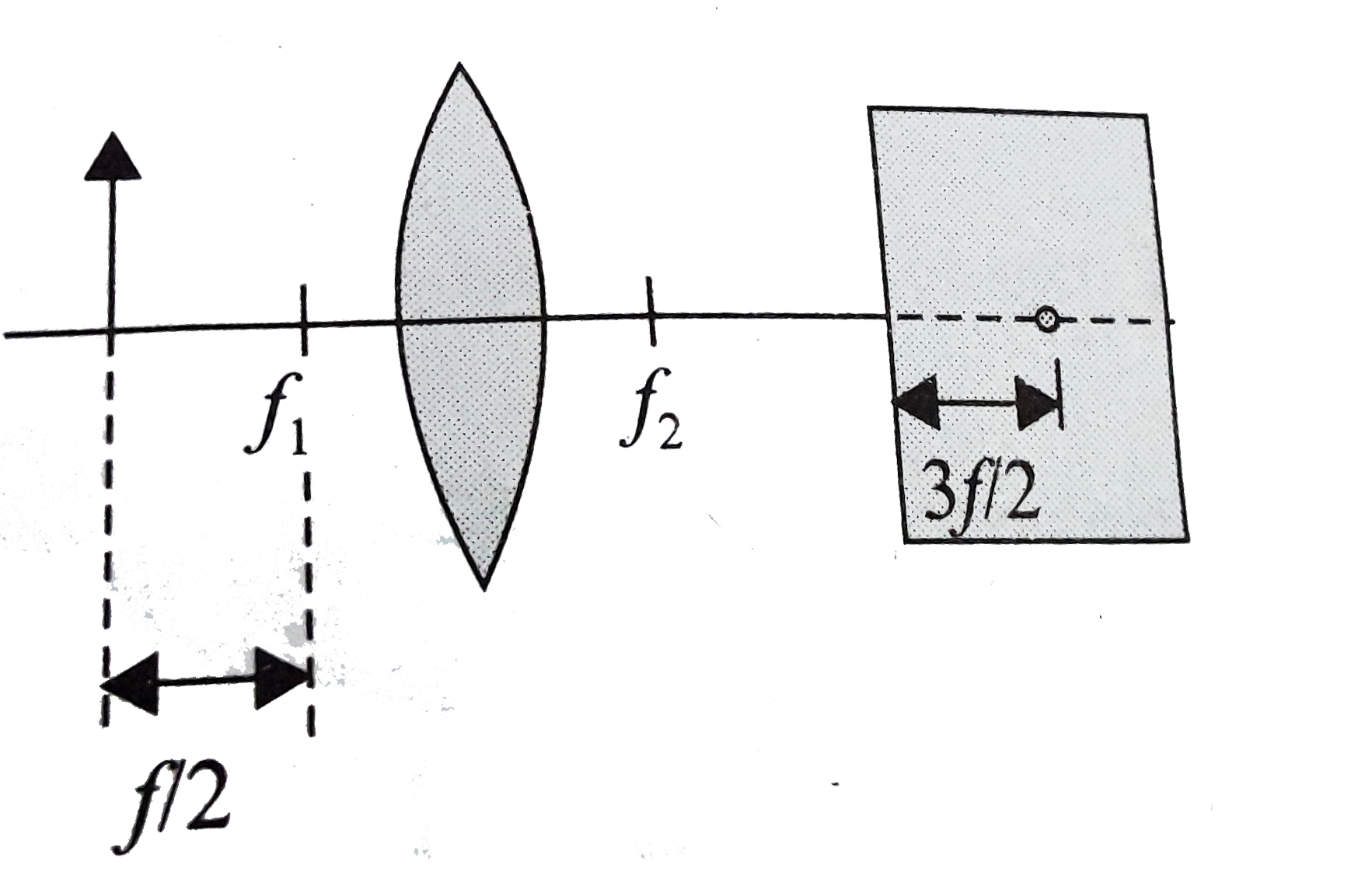An object is placed between f and 2f of a convex lens. Which of the following statements correctly describes its image?
real, larger than the object
erect, smaller than the object
inveted, same size as object
virtual, larger than the object
To determine the characteristics of the image formed by a convex lens when an object is placed between the focal point (f) and twice the focal point (2f), we can follow these steps:
1. Identify the Lens and Object Position:
- We have a convex lens with its focal point (f) and twice the focal point (2f). The object is placed between f and 2f.
2. Draw the Ray Diagram:
- Start by drawing the principal axis, the convex lens, and marking the focal points (f and 2f).
- Place the object between f and 2f on the principal axis.
3. Trace the Rays:
- Draw a ray parallel to the principal axis from the top of the object. This ray will pass through the focal point on the opposite side after refraction.
- Draw another ray passing through the optical center of the lens. This ray will continue in a straight line without bending.
4. Locate the Image:
- The point where these two rays intersect on the opposite side of the lens indicates the position of the image.
5. Determine the Characteristics of the Image:
- Position: The image is formed beyond 2f.
- Nature: The image is real because the rays actually converge at the image point.
- Orientation: The image is inverted relative to the object.
- Size: The image is larger than the object.
Conclusion:
The correct description of the image formed by a convex lens when the object is placed between f and 2f is that the image is real, inverted, and larger than the object.
- We have a convex lens with its focal point (f) and twice the focal point (2f). The object is placed between f and 2f.
- Start by drawing the principal axis, the convex lens, and marking the focal points (f and 2f).
- Place the object between f and 2f on the principal axis.
- Draw a ray parallel to the principal axis from the top of the object. This ray will pass through the focal point on the opposite side after refraction.
- Draw another ray passing through the optical center of the lens. This ray will continue in a straight line without bending.
- The point where these two rays intersect on the opposite side of the lens indicates the position of the image.
- Position: The image is formed beyond 2f.
- Nature: The image is real because the rays actually converge at the image point.
- Orientation: The image is inverted relative to the object.
- Size: The image is larger than the object.
The correct description of the image formed by a convex lens when the object is placed between f and 2f is that the image is real, inverted, and larger than the object.
Topper's Solved these Questions
- BOOK - LAKHMIR SINGH & MANJIT KAURCHAPTER - REFRACTION OF LIGHTEXERCISE - LONG ANSWER TYPE QUESTIONS3videos
REFRACTION OF LIGHT
- BOOK - LAKHMIR SINGH & MANJIT KAURCHAPTER - REFRACTION OF LIGHTEXERCISE - SHORT ANSWER TYPE QUESTIONS1videos
REFRACTION OF LIGHT
- BOOK - LAKHMIR SINGH & MANJIT KAURCHAPTER - REFRACTION OF LIGHTEXERCISE - VERY SHORT ANSWER TYPE QUESTIONS1videos
REFRACTION OF LIGHT
- BOOK - LAKHMIR SINGH & MANJIT KAURCHAPTER - REFLECTION OF LIGHT EXERCISE - Very Short Answer Type Questions1videos
REFLECTION OF LIGHT
- BOOK - LAKHMIR SINGH & MANJIT KAURCHAPTER - SOURCES OF ENERGY EXERCISE - NCERT8videos
SOURCES OF ENERGY
Similar Questions
Knowledge Check
- Question 1 - Select One
An object is placed before a convex lens. The image formed
Ais always erectBmay be erect or invertedCis always invertedDis always real - Question 2 - Select One
An object is placed before a convex lens. The image formed
Ais always realBmay be real or virtualCis always virtualDis always erect - Question 3 - Select One
When an object is placed between F and 2F in front of a convex lens, the image formed is
Areal and invertedBbeyond 2FCmagnifiedDall the above
When an object is placed between O and F1 in front of a convex lens, the image formed
View SolutionAn object is placed at a distance of f/2 from a convex lens. The image will be
View SolutionWhen an object is placed between O and F1 in front of a convex lens, the image formed
View SolutionAn object is placed at a distance u from an equiconvex lens such that the distannce between the object and its real image is minimum. The focal length of the lens is f. The value of u is
View SolutionAn object is placed at f/2 away from first focus of a convex lens where f is the focal length of the lens. Its image is formed at a distance 3f/2 in a slab of refractive index 3/2 , from the face of the slab facing the lens. Find the distance of this face of the slab from the second focus of the lens.
 View Solution
View Solution

